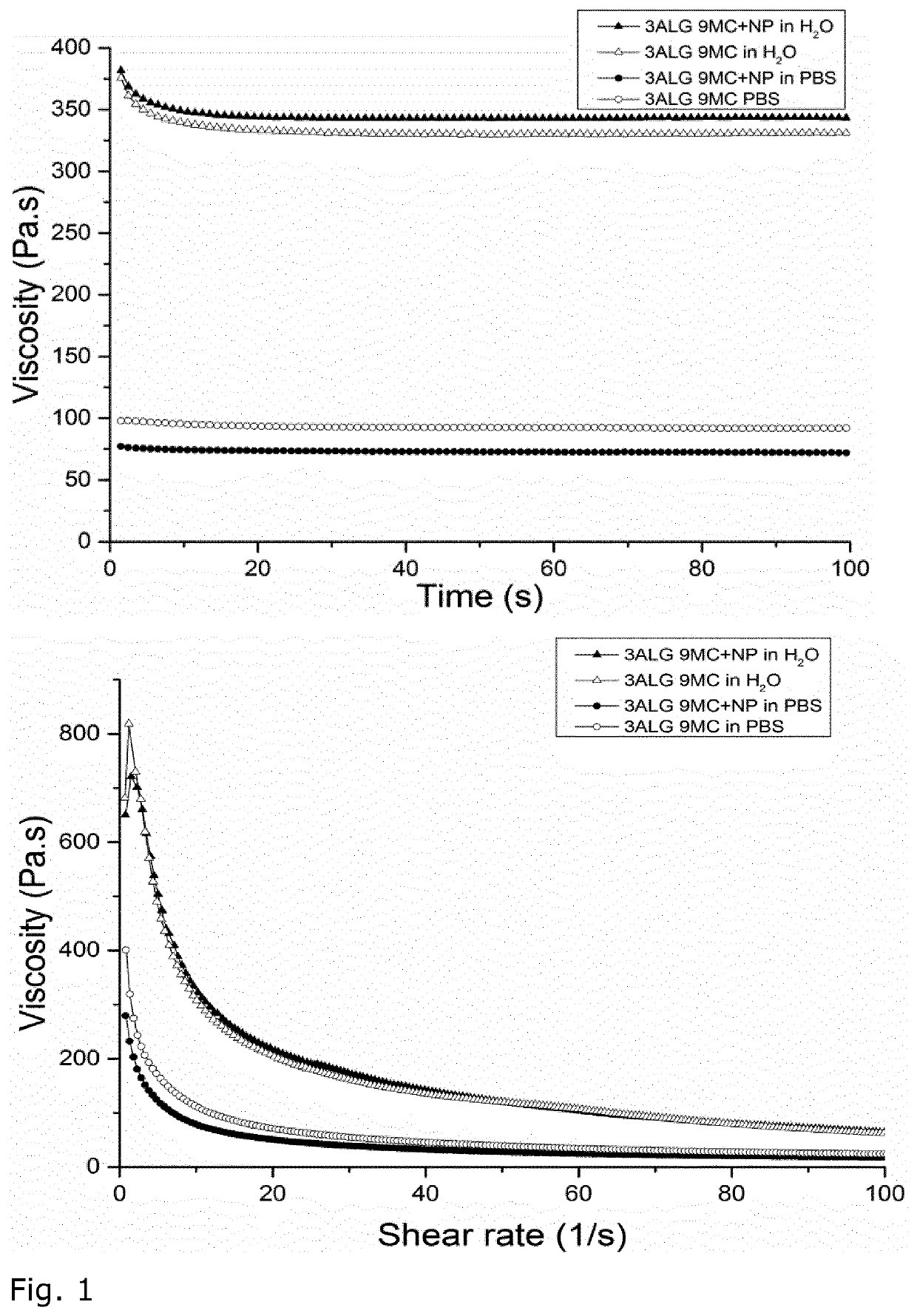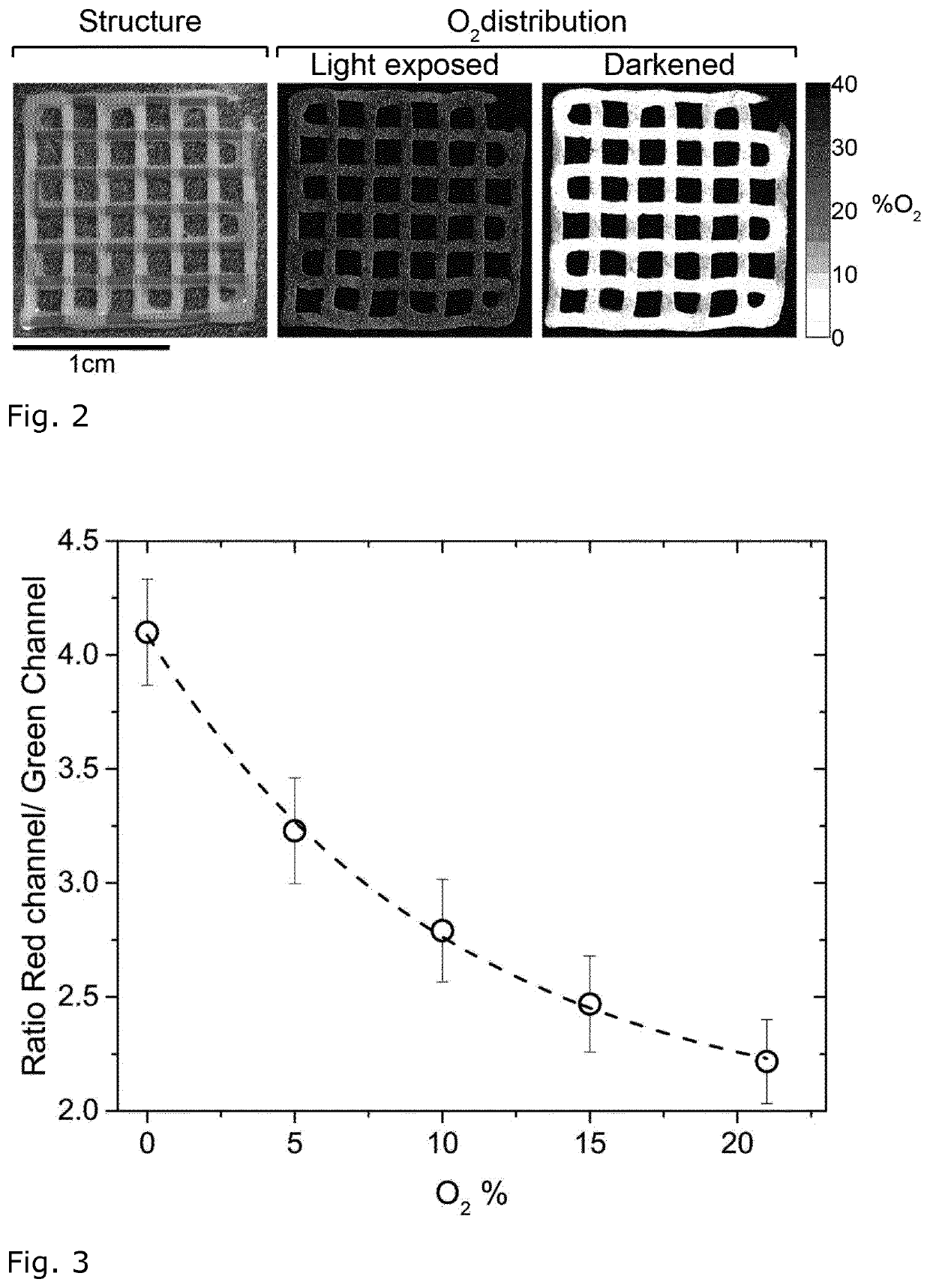Sensor functionalised bioink
- Summary
- Abstract
- Description
- Claims
- Application Information
AI Technical Summary
Benefits of technology
Problems solved by technology
Method used
Image
Examples
example
[0058]Preparation of O2 Sensitive Nanoparticles
[0059]Oxygen (O2) was selected as an appropriate metabolite, and O2 sensitive nanoparticles were prepared. The O2-sensitive indicator Platinum(II) meso(2,3,4,5,6-pentafluoro)phenyl porphyrin (PtTFPP) was bought from Frontier Scientific (www.frontiersci.com). A reference dye Bu3Coum was generously provided by Dr. Sergey Borisov (Graz University of Technology). A styrene maleic anhydride copolymer (PSMA with 8% MA, Mw: 250000 g mol−1) XIRAN® was provided from Polyscope (http: / / www.polyscope.eu). Tetrahydrofuran (THF) was obtained from Sigma-Aldrich.
[0060]The O2-sensitive sensor nanoparticles were prepared according to Mistlberger et al. (2010). Briefly, 200 mg of PSMA, 3 mg of Bu3Coum (reference dye) and 3 mg of PtTFPP (O2 indicator) were dissolved in 20 g of THF. This mixture was quickly poured into 200 mL of vigorously stirred distilled water. After evaporating the THF under an air stream, the particle suspension was concentrated at ele...
PUM
 Login to View More
Login to View More Abstract
Description
Claims
Application Information
 Login to View More
Login to View More - R&D
- Intellectual Property
- Life Sciences
- Materials
- Tech Scout
- Unparalleled Data Quality
- Higher Quality Content
- 60% Fewer Hallucinations
Browse by: Latest US Patents, China's latest patents, Technical Efficacy Thesaurus, Application Domain, Technology Topic, Popular Technical Reports.
© 2025 PatSnap. All rights reserved.Legal|Privacy policy|Modern Slavery Act Transparency Statement|Sitemap|About US| Contact US: help@patsnap.com



